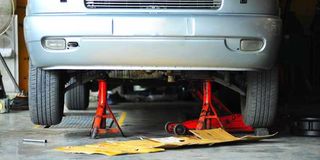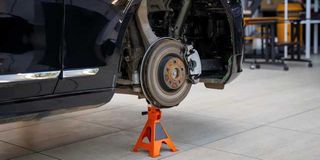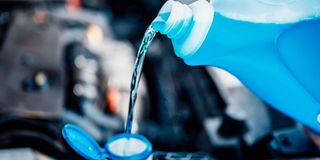
All large buses are about 11-12 metres long, 2.5 metres wide and of similar single-deck height.
Are school buses different from regular city buses and long-distance coaches, or are they all interchangeable? PN
There are two main categories of large bus design – those built for strictly urban transport (short distances, low speeds, on smooth city streets, frequently stopping to load and unload passengers), and those more suitable for general use over longer distances, at higher speeds, on inter-city highways and in rural areas where road surfaces and shapes demand significantly higher floor clearance.
Most urban buses are forward-control (no bonnet) to maximise passenger space behind the driver, and they have very low ground clearance so their in-out steps are nearer pavement level. In many parts of the world, they increasingly have pneumatic suspensions that lower the floor even more when they stop, and raise the floor slightly when they move off again.
They are also geared differently to suit their frequent stop-start movement patterns. Lower ground clearance and under-floor engines (front or rear) also lower their centre of gravity, making them more stable even when carrying heavy passenger loads (many of them standing), and with a licenced carrying capacity of 100 or more people. This is of course most crucial for double-deckers. More and more of these are also electric or hybrid to mimimise urban smog.
General and long-distance buses are geared more appropriately for higher speed cruising, and have higher ground clearance (and hence slightly more challenging steps to climb and descend). They also have provision for more under-floor luggage storage along their sides.
School buses are similar to, and mostly drawn from this category, and a high proportion of them have front-mounted engines (under a projecting bonnet). Forward engine compartments, well-designed as crumple zones, provide additional protection in the event of front-end collisions.
The most conspicuous visual feature of school buses is that they are usually bright yellow (in many places this is a mandatory legal requirement) so they are highly visible in all lighting conditions, and to message all other motorists well in advance that “this vehicle is carrying small children”, with all the special considerations that demands.
Their very distinctive “look” is perhaps best known from US-based movies. In that and similar markets, they are accorded sacrosanct status by other motorists. Messing around anywhere near a school bus would unleash a torrent of public complaint, peer pressure (at the level of “social disgrace”) and official action.
All large buses are about 11-12 metres long, 2.5 metres wide and of similar single-deck height. They weigh between 8 and 12 tons, and are usually powered by either six or eight-cylinder diesel engines with capacities between 7 and 10 litres.
All are required to operate in accordance with a long list of public transport regulations which reserve their highest stringency for school buses. These regulations include both standard and special features: ranging from seatbelts, speed limiters, first aid kits and fire extinguishers, to red flashing lights, cross-view mirrors, extended stop alarms, protective seating with robust anchors and high backs, two batteries, conservative passenger limits, higher crash and roll-over protection standards, and possible HQ-linked GPS recorders to monitor their behaviour and assure their known location at all times. The exterior must prominently carry the school’s name, and inappropriate decorations/ads inside or out are forbidden.

School bus.
There are also more stringent standards and checks on their operational disciplines, ranging from regular preventive maintenance and pre-trip routines to background checks, and regular refresher training of their drivers. Their speed limit is 60 kph on the open road, down to 5 kph (gentle walking speed) when they enter a school compound. They are expected to turn off their engines as soon as they halt. There must always be an assistant to the driver and for longer trips, parental consent is required by the passengers and there must be one or more qualified teachers (not just “attendants”) on board.
The aim is to ensure that travelling in a school bus is at least as safe and often safer than a private car, in terms of both accident avoidance and passenger protection in the event of a crash. Increasing attention is being given to design features catering for children with special needs (including easier access provision and different seats and restraints).
Other motorists should know that if a school bus is stopped on the road with its hazard lights flashing, they should halt at least 25 metres behind the bus on the presumption that children may be disembarking and perhaps randomly active in the area. If passing a stopped bus on the outer side, there is a speed limit of 10 kph.
This is a special category of vehicle and warrants sourcing from high-quality manufacturers and suppliers with equally specialised knowledge and experience of the parameters. It is not the market for tarted-up scrap or guesswork conversions. Kenyan schools also operate a large number of smaller buses of the manyanga type, based on 3-5 tonne truck chassis, and some schools operate conventional minibuses. These are similarly regulated in their colour, safety provisions and operational disciplines. When anywhere near them, combative driving attitudes are a no-no.
Precautions to take when changing a car’s tyre

Changing car tyre.
If a car is raised in one corner using a strong jack on firm and flat ground, is it safe to remove the raised wheel and work underneath the vehicle?
Maybe. And that is not nearly good enough to ensure safety. Before a car is jacked up in any manner, you should ensure it cannot roll forwards or backwards by even a very small amount. Chock the wheels. Apply the handbrake. Engage gear.
Even if the ground is flat, the very act of jacking will put the weight of the vehicle on a slope – one part high than another. Even if you are jacking just one corner, every other corner will be affected in some way to some extent, as the car has a flexible suspension but a rigid body.
If you do not intend to remove a wheel, and no one will get underneath the vehicle, then firm-flat ground, a good jack and effective wheel chocking makes the risks minimal. Even if the jack breaks or falls (they sometimes do), when the raised wheel lands there will still be some space between the vehicle floor and the ground.

Changing car tyre. Before anyone goes under the car, the raised corner should be supported by at least two items.
If a raised wheel is removed, then if the jack collapses the vehicle floor will hit the ground with crushing force. So before anyone goes under the car, the raised corner should be supported by at least two items – the lifting jack plus either another jack, or an axle stand, or stone blocks, or heavy timber, or other tall enough and strong enough and stable enough “catcher”) - so the chances of a fall are much reduced and even in the worst case scenario of a fall, there will still be a gap between the car floor and the ground.
Strictly speaking, no one should work underneath a partly raised car unless its weight is fully and stably supported by at least two purpose-built and robust axle stands with tripod (or quad pod) bases.
Coolant and radiators

Car radiator.
My friends say they hardly ever have to top up their radiators. Any water expelled during use is captured in the expansion tank and is sucked back into the radiator reservoir when the engine cools. The expansion tank connected to my radiator quickly fills and then floods. The temperature gauge reads normal, but the overflow causes water loss and I have to top up quite often. What could be the cause?
Almost certainly, your radiator cap is to blame. Either the rubber seal or the strength of its pressure spring is faulty. Replace the cap with a new one that has the correct pressure rating. Problem probably solved.
The radiator, its inlet and outlet hoses, the water pump, the thermostsat housing and the cooling channels in the engine block are all part of a “sealed” system. The coolant, and perhaps a little bit of air, have nowhere else to go except round and round inside that system.
When the engine is running, the coolant absorbs the heat the engine generates. The coolant gets hot. And the heat makes it expand. In a sealed system, that generates pressure. Cooling systems are not only designed to cope with that pressure – they also rely on it to ensure that very hot coolant (quite near the boiling point of water) does not generate bubbles or air or steam, which the water pump cannot circulate properly.
If in hard engine use that pressure became too great, it could split the radiator seams and even become explosive. So radiators have a pressure release valve – in their caps. When the pressure limit is exceeded, a spring seal inside the cap is squashed upwards, opening an escape hole in the filler neck. Pressure and some coolant escapes through that hole.

Some car manufacturers are fussier about coolants than others.
In the past, this coolant was lost, so radiators had to be topped up quite frequently to replace it. Nowadays, all vehicles have so-called “expansion tanks”, connected by a narrow tube to the hole/nozzle in the filler neck. Coolant which escapes during pressure release is captured in this tank. When the journey ends and everything cools down, the remaining coolant in the radiator “shrinks”. In a seal system that creates suction, which automatically draws the coolant captured by the expansion tank back into the radiator. Hence, top-ups are very rarely necessary.
If the pressure release spring in the radiator cap is too weak, it will be squashed “open” too easily, and too much coolant will be expelled too soon. Because the engine is still generating heat and more pressure, this process will continue until the expansion tank is full and ultimately force coolant out of the usually flimsy lid of the expansion tank. The flood flow will be lost and the radiator will need frequent top ups.
The pressure rating of the cap is clearly crucial. It must not release coolant until the pressure threshold is too high. For that reason, a replacement cap must have the correct rating for your car’s particular system. If the rating to too low, too much coolant will continue to escape. If it is too high, it could prevent pressure escape to a level that could damage the structure and seams of the radiator, or the hoses, or force leaks at the hose connections.
Keeping your cool if you lose your cap
As radiators are designed to operate under pressure, can the car still be run and will the cooling system still work is the radiator cap is removed or lost?
Yes, and Yes. But not too strenuously and with caution…and slightly less coolant. If the cap is removed, the system will no longer be sealed, so the circulation of coolant will be slightly compromised, and there will be a greater risk of air bubbles and steam if it gets very hot.
But the water pump will continue to circulate whatever coolant is available, and that coolant will circulate through the outlet hose, through the water jacket channels in the engine block (cooling the engine) and back through the inlet hose into the radiator, where it will pass through the radiator core and be cooled by the flow of air from the car’s movement and/or the fan.
The force of circulation will be determined by the water pump, which will spin faster or slower according to the engine revs. If you rev too hard, this will generate more heat and possibly spray coolant out of the radiator filler neck.
So, driving at moderate engine revs to ensure good circulation and reduce heat generation is the way to keep your cool as you drive towards the nearest source of a replacement cap. Keep your eye on the temperate gauge at all times, and be ready to stop and top up (in case too much of the coolant has been sprayed out), but don’t refill to the brim because that water will be instantly expelled. Refill to within three or four centimetres below the filler neck.












